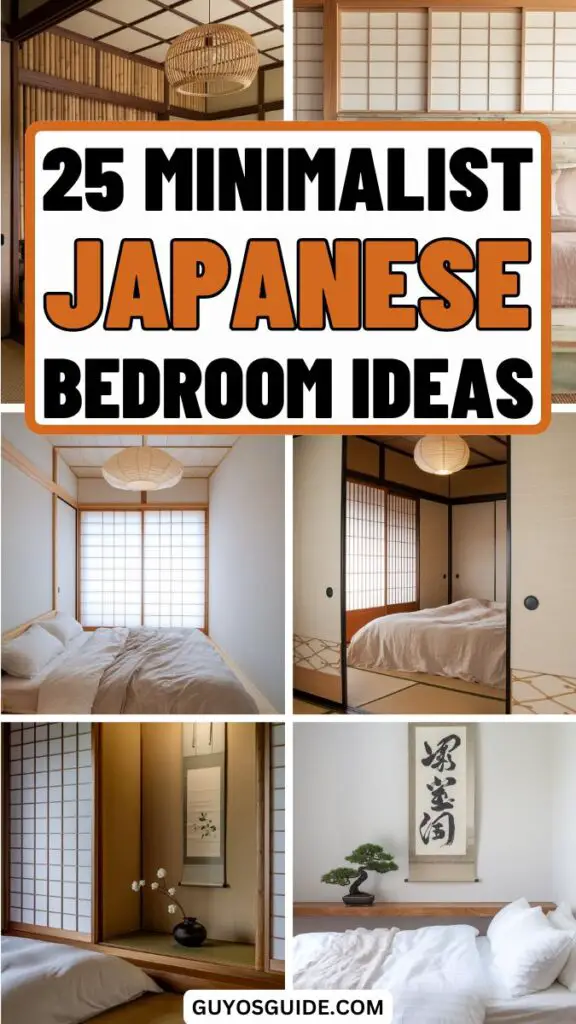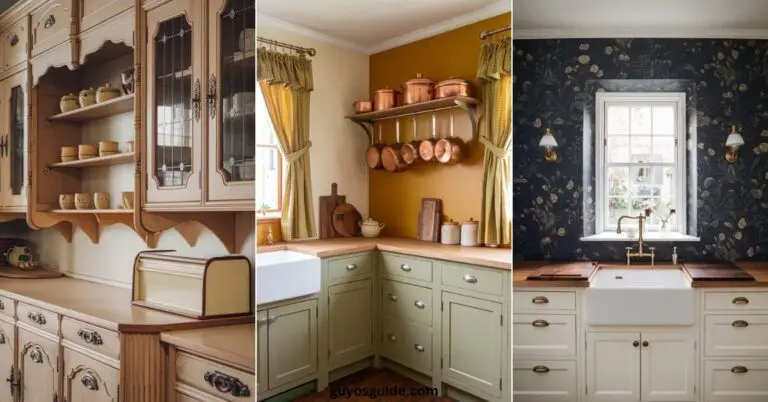25 Minimalist Japanese Bedroom Ideas for a Zen Retreat
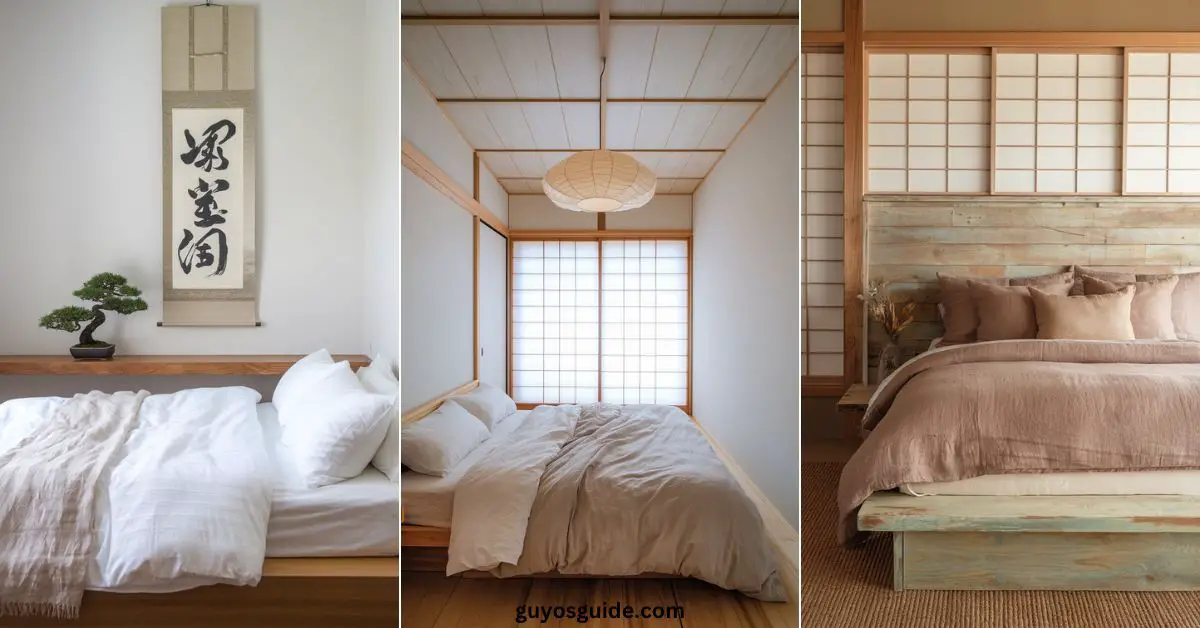
Want to make your bedroom calm and cozy?
A Japanese-style bedroom is simple, peaceful, and beautiful. In this article, we’ll share easy ideas for bringing Japanese design into your space.
From tatami mats to soft lighting, get ready to create a relaxing retreat.
Let’s get started!
1. Embrace Minimalism
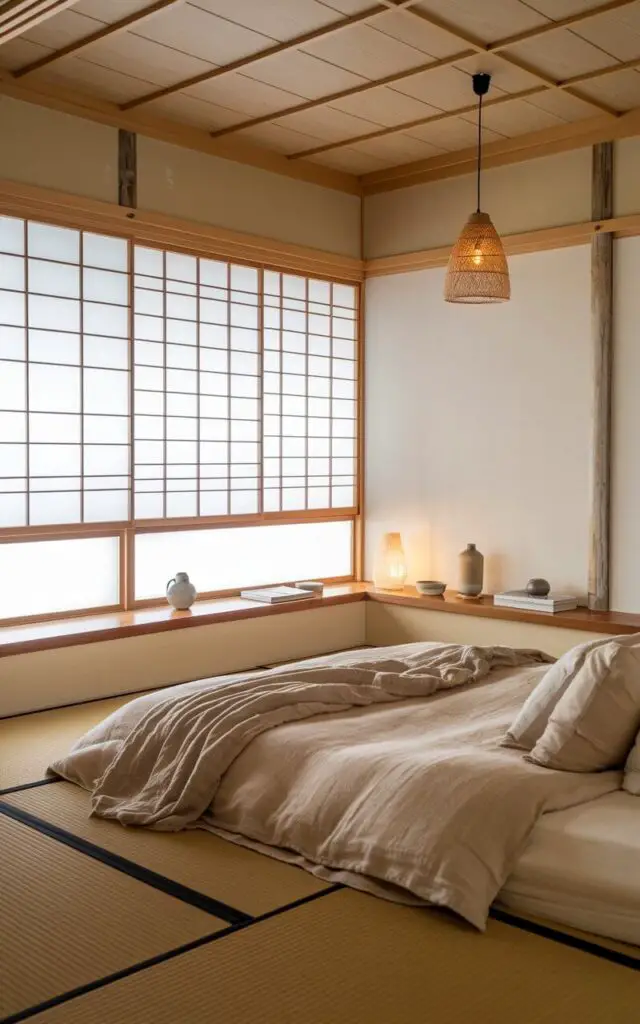
Japanese bedrooms focus on simplicity and function.
Keep only essential furniture, like a low bed and a small bedside table. Avoid clutter by using smart storage solutions.
Open space creates a peaceful, Zen-like atmosphere, promoting relaxation.
A clean, minimalist design fosters mindfulness and harmony in your sleeping environment.
2. Use a Tatami Mat
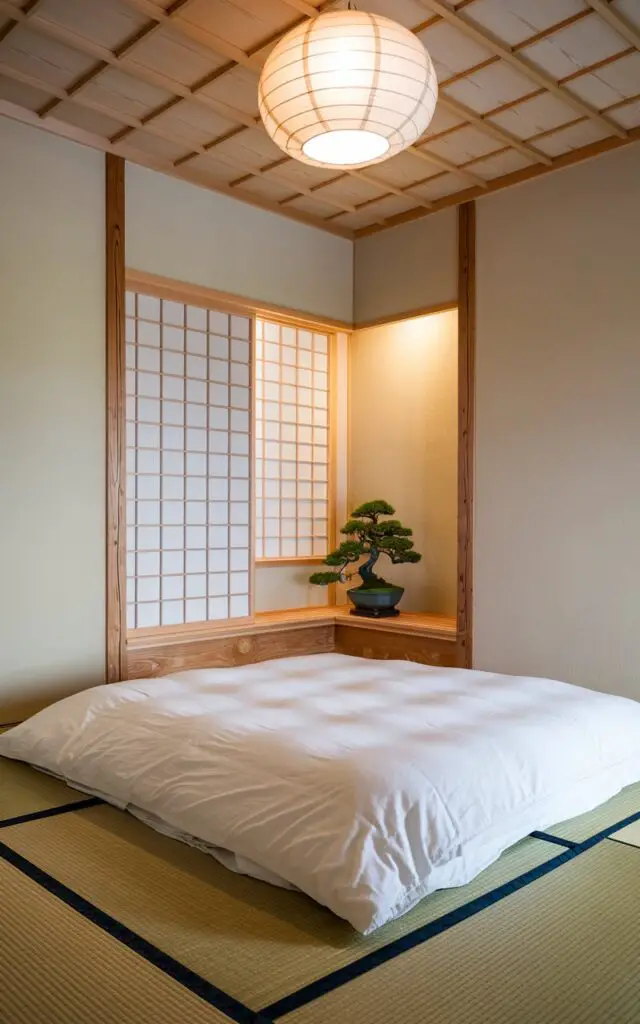
Tatami mats, woven from straw, are a classic feature of Japanese bedrooms.
They provide natural flooring that feels warm underfoot.
Traditional Japanese homes often layer them across the entire floor, but you can use one as an accent rug.
Tatami also encourages a grounded, floor-based lifestyle, enhancing simplicity.
3. Opt for Shoji Screens
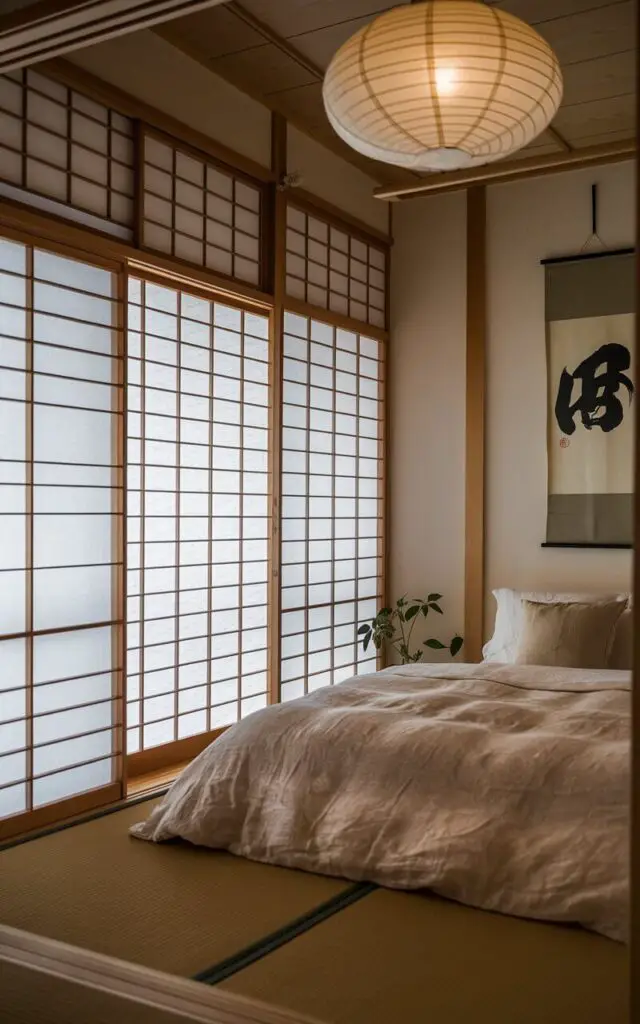
Shoji screens, made of translucent paper and wooden frames, are a signature of Japanese interiors.
They allow soft, diffused light while maintaining privacy.
Sliding instead of swinging doors, they save space and create a seamless flow between rooms.
Their minimalist aesthetic enhances the serene and airy bedroom atmosphere.
4. Choose a Futon Bed
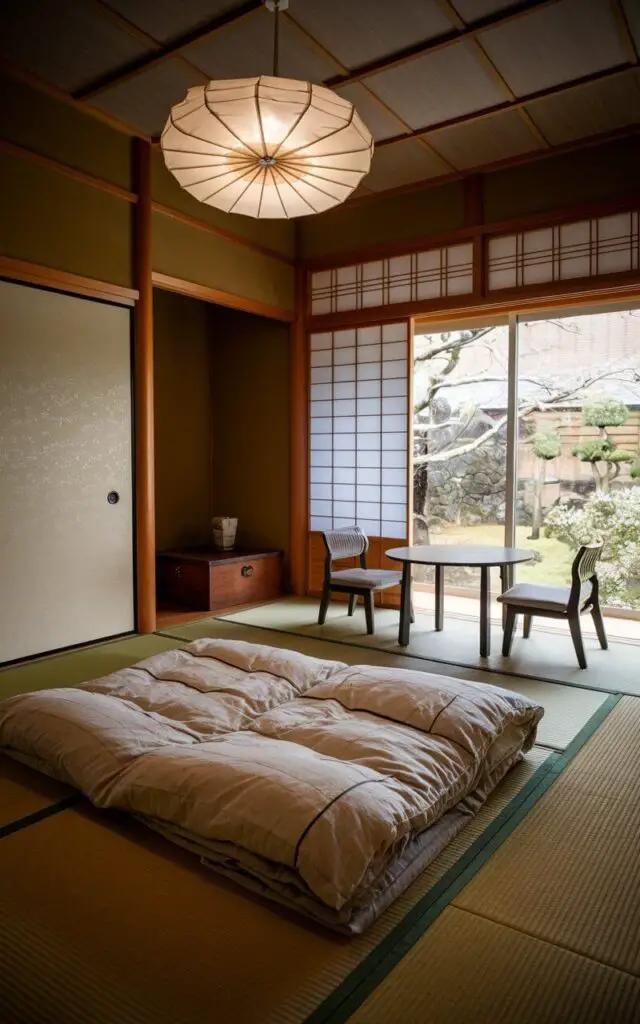
A futon mattress offers flexibility and tradition.
Unlike Western beds, Japanese futons are rolled up and stored during the day, freeing space.
This simple bedding promotes better posture and connects you with traditional Japanese living.
A futon setup fosters a lightweight, clutter-free room with an adaptable, minimalist design.
5. Incorporate Natural Wood Elements
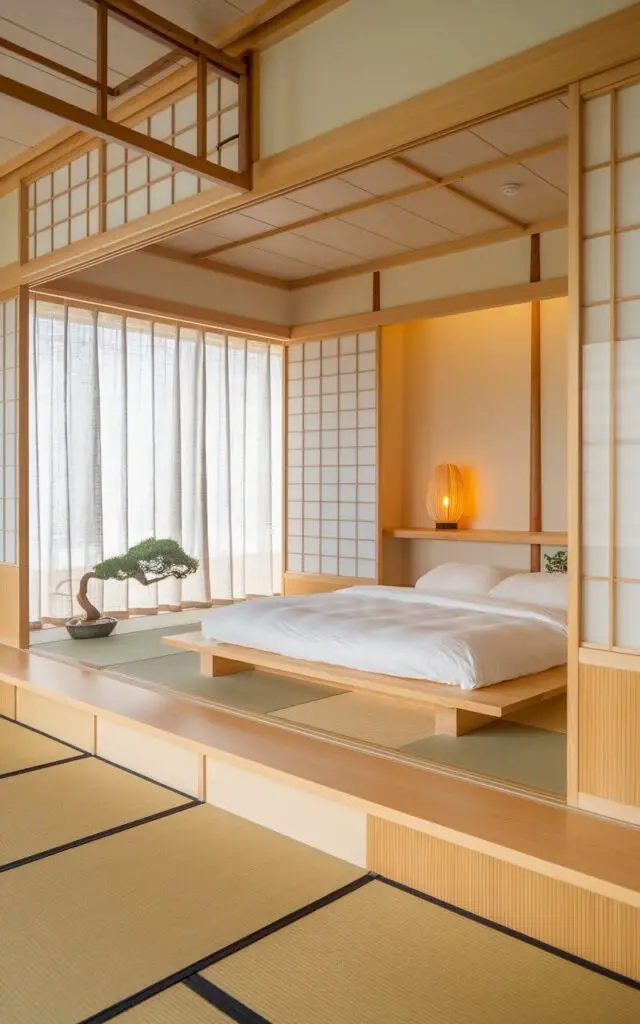
Japanese interiors feature raw, natural wood in flooring, furniture, and décor.
Light-toned woods like cypress and cedar create warmth and calmness.
Use wooden bed frames, low tables, or shelving to bring an organic feel to your space.
The natural textures of wood enhance a peaceful, harmonious bedroom.
6. Create a Zen-Inspired Alcove (Tokonoma)
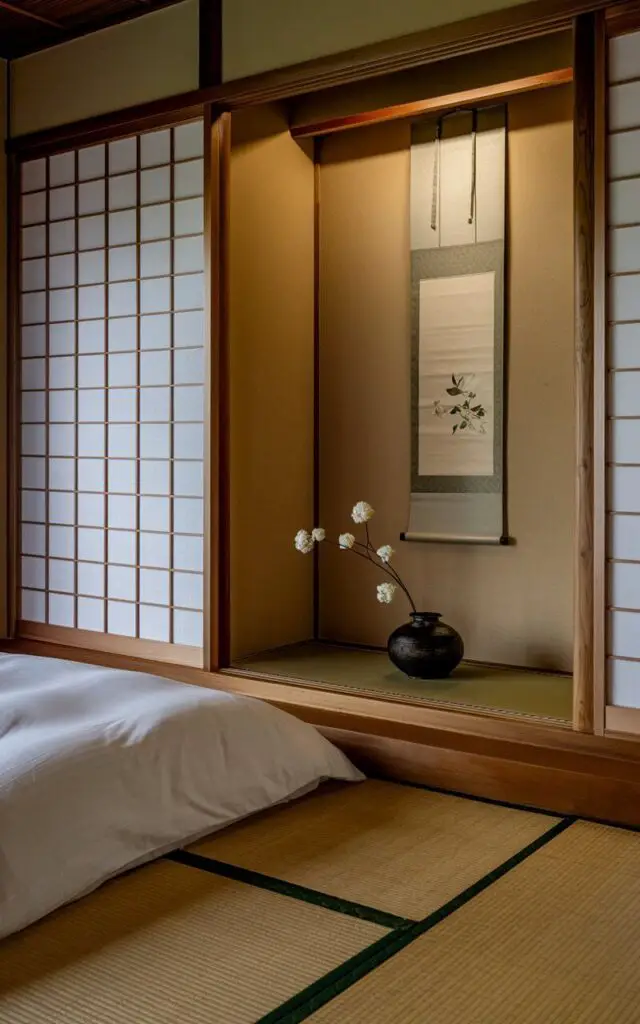
A tokonoma is a recessed wall space in Japanese rooms used for displaying art or meaningful objects.
Set up a small alcove in your bedroom to showcase a hanging scroll, a single flower arrangement, or a small sculpture.
This simple yet elegant space fosters mindfulness and appreciation.
7. Use Soft, Neutral Colors

A calming color palette is essential in Japanese design.
Choose earthy hues like soft beige, muted grays, or gentle greens. These tones reflect nature and enhance relaxation.
Avoid bold or overly bright colors, as they can disrupt the tranquil atmosphere.
Neutral colors help maintain a balanced, peaceful space.
8. Add a Low Wooden Platform Bed
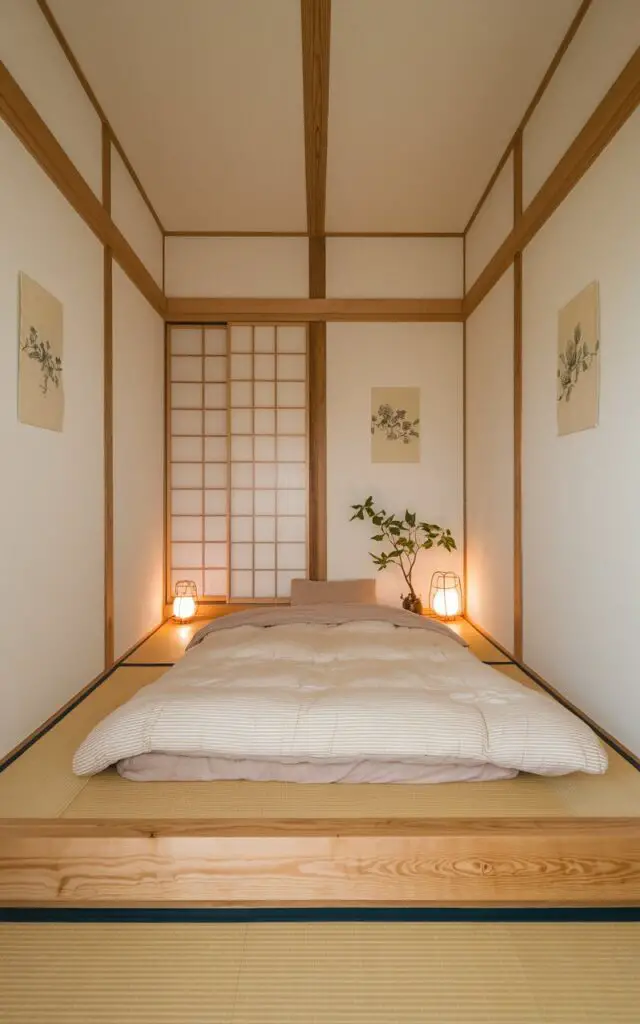
Instead of a high bed frame, opt for a low wooden platform bed.
Inspired by traditional Japanese sleeping arrangements, this design keeps the room feeling open and airy.
A low bed fosters a closer connection to the ground, creating a calming environment that enhances the minimalist aesthetic of the space.
9. Integrate Indoor Plants

Japanese interiors emphasize a connection to nature.
Incorporate plants like bonsai, bamboo, or peace lilies to bring life into your space. Greenery purifies the air and promotes relaxation.
Keep arrangements simple and uncluttered—one well-placed plant can enhance the room’s harmony without overwhelming the minimalist design.
10. Layer Soft, Natural Textiles

Opt for lightweight, breathable materials like linen, cotton, or wool for bedding and curtains.
Traditional Japanese textiles focus on comfort and simplicity. Soft, natural fabrics in neutral colors enhance the serene atmosphere.
Avoid heavy, synthetic fabrics, which can feel out of place in a minimalist, nature-inspired bedroom setting.
11. Install Floor Lanterns
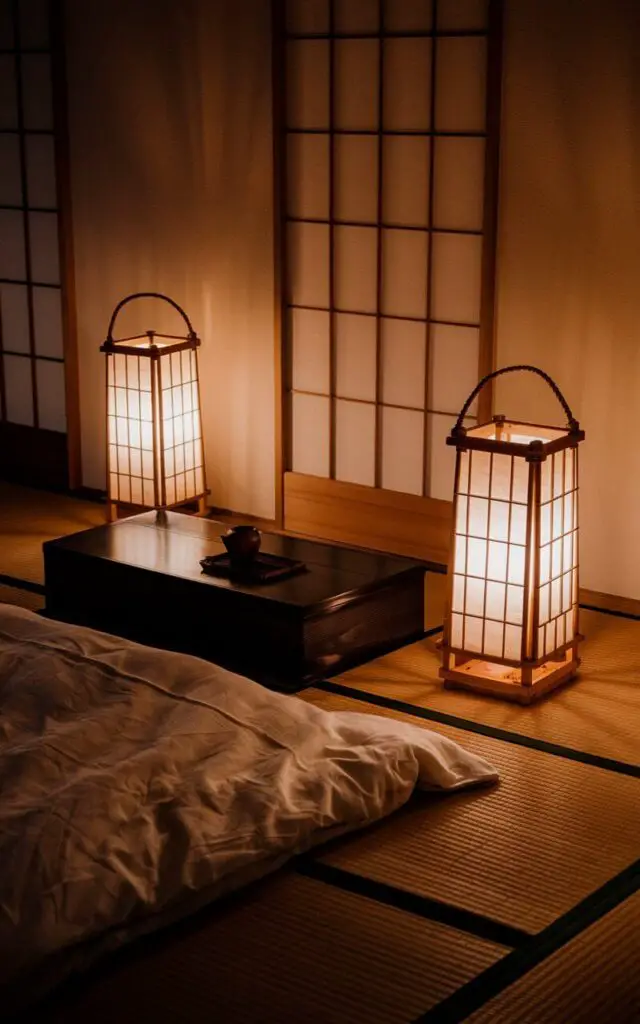
Soft lighting is key to a cozy, Japanese-inspired bedroom.
Traditional paper floor lanterns, or andon lamps, emit a warm, diffused glow.
Their gentle illumination creates a calming ambiance, perfect for relaxation.
Opt for natural materials like rice paper and wood to maintain an authentic, organic aesthetic in your space.
12. Decorate With Japanese Calligraphy
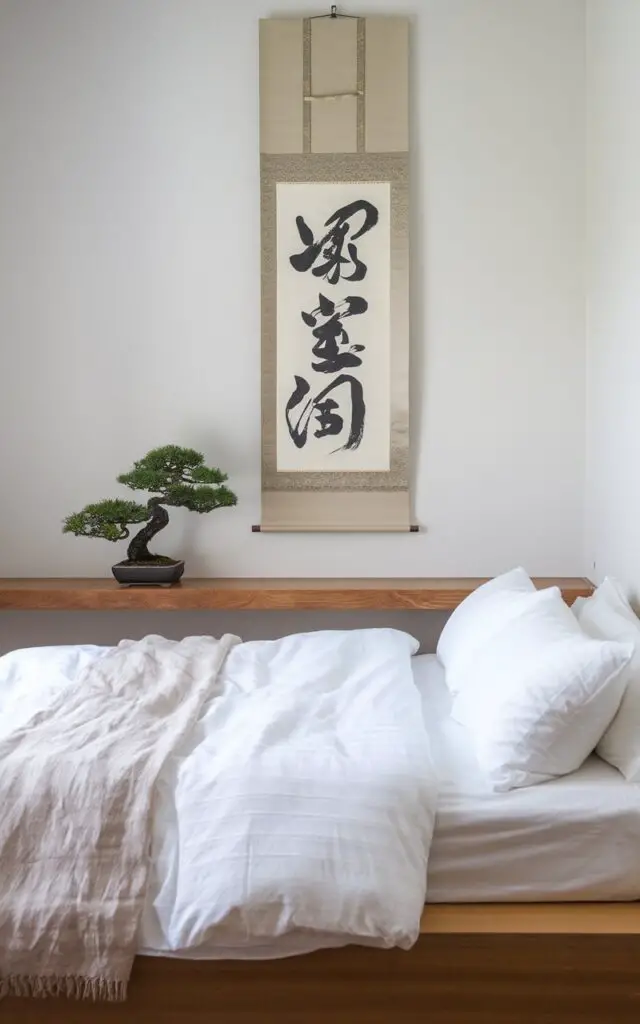
Japanese shodō (calligraphy) art adds cultural depth and elegance to your bedroom.
Choose framed kanji characters that symbolize peace, harmony, or nature.
A single, well-placed calligraphy scroll or artwork creates a focal point without cluttering the space.
This artistic touch adds meaning while maintaining simplicity in design.
13. Keep Storage Hidden and Clever
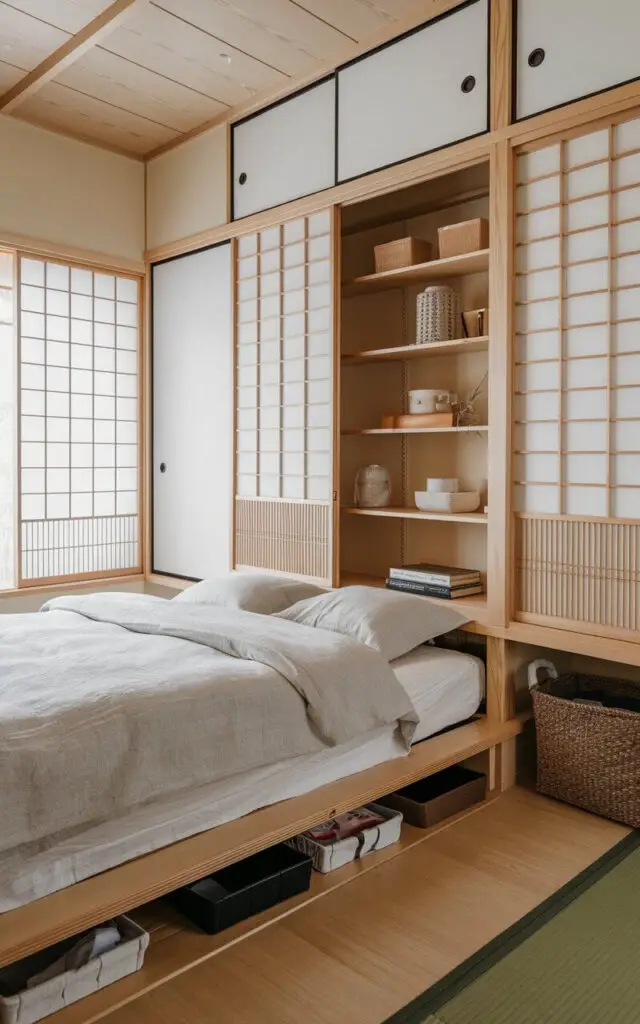
To maintain a minimalist aesthetic, use hidden storage solutions.
Under-bed drawers, sliding door closets, and woven baskets help keep the room tidy.
Japanese design values clean, uncluttered spaces, so prioritize functional furniture with built-in storage.
Keeping belongings out of sight enhances the sense of serenity and openness.
14. Add a Rock Garden Element
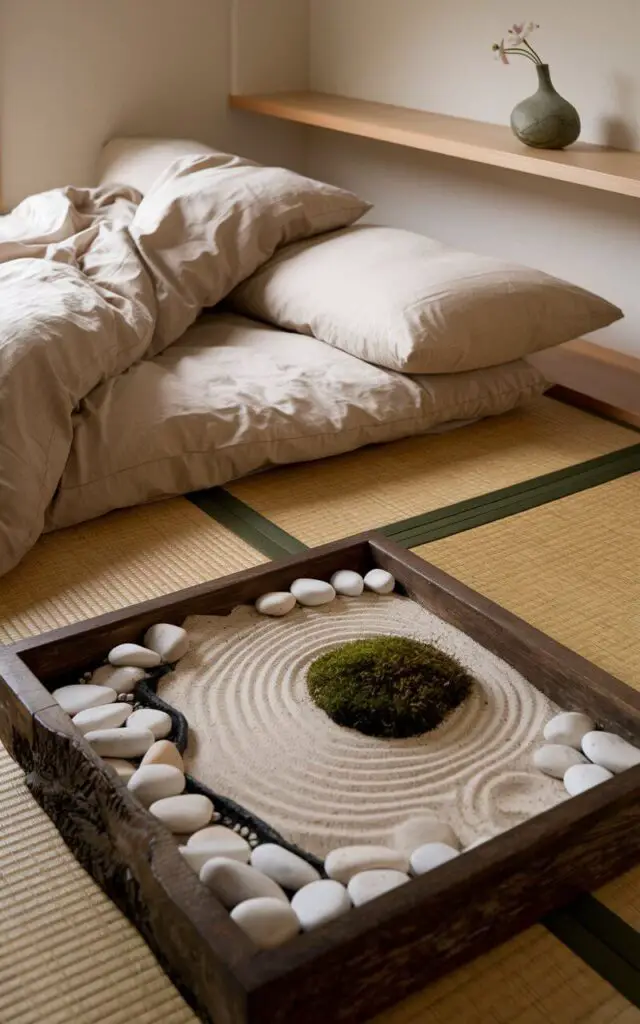
A small indoor karesansui (rock garden) introduces Zen aesthetics to your bedroom.
Arrange sand, stones, and moss in a tabletop dish or tray for a meditative focal point.
This miniature rock garden symbolizes nature’s beauty and simplicity, encouraging mindfulness and relaxation in your sleeping environment.
15. Use Sliding Doors Instead of Hinged Ones
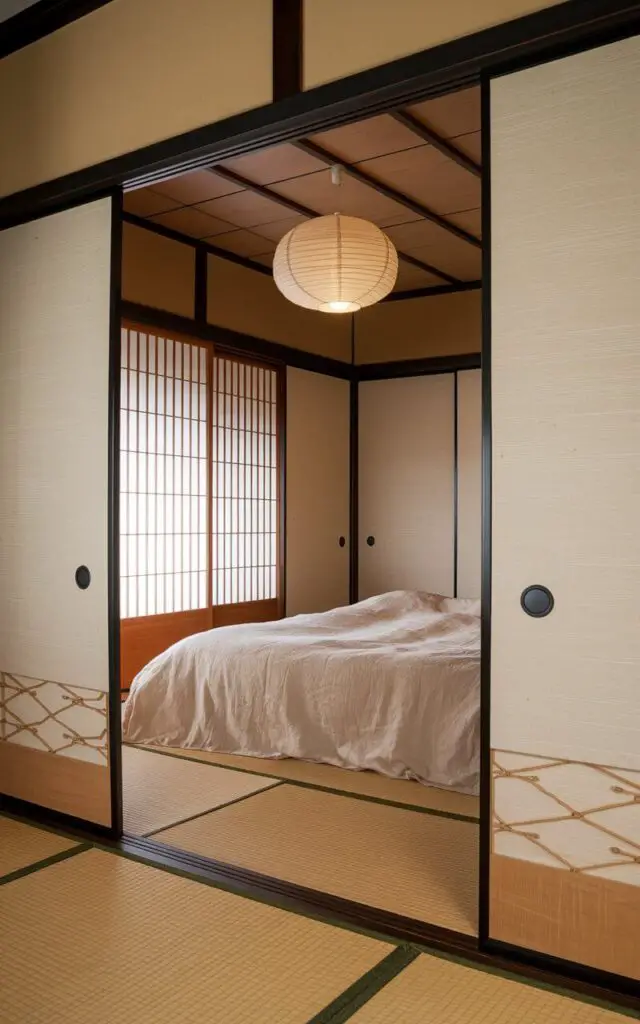
Traditional Japanese homes use fusuma (opaque sliding panels) or shoji (translucent paper screens) instead of hinged doors.
These save space and create a seamless transition between rooms.
Sliding doors enhance the minimalist aesthetic while providing functional, stylish separation between your bedroom and other areas.
16. Incorporate Bamboo Accents
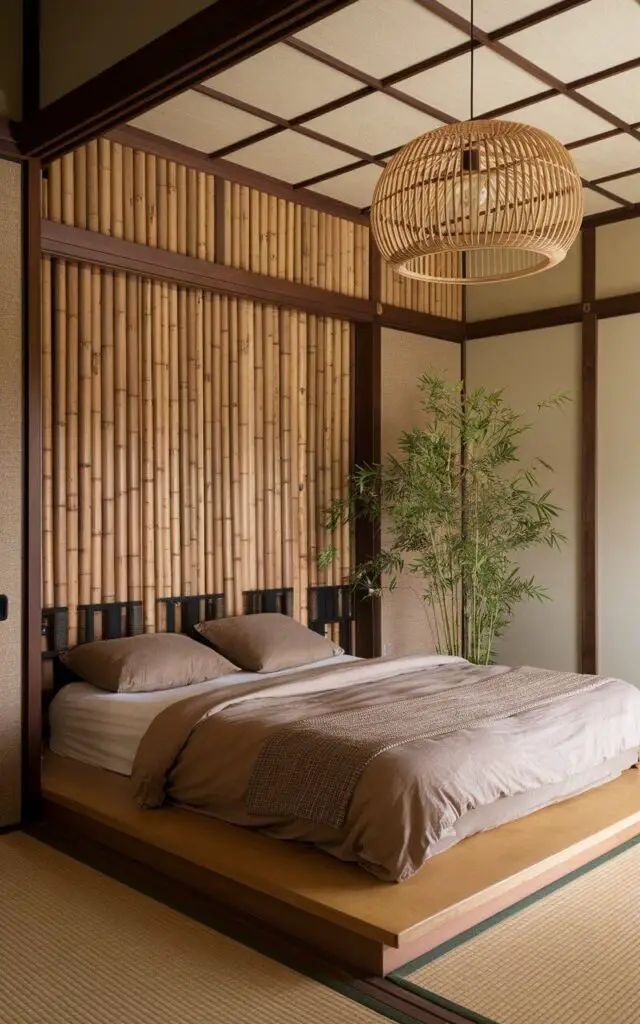
Bamboo is a key element in Japanese interiors due to its durability and natural beauty.
Use bamboo blinds, furniture, or wall panels to bring warmth and texture to your bedroom.
Its lightweight and eco-friendly nature aligns with the principles of simplicity and sustainability found in Japanese design.
17. Create a Floor Seating Area
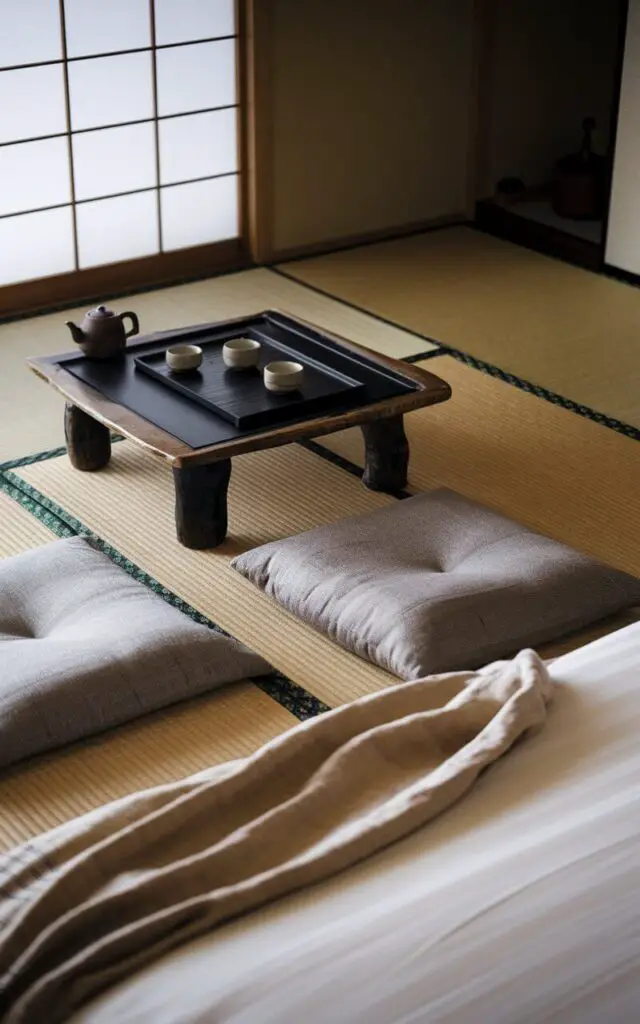
A chabudai (low table) with zabuton cushions offers a cozy, floor-based seating arrangement.
Traditionally used for dining or tea ceremonies, this setup enhances intimacy and mindfulness.
Placing a simple mat beneath the table helps define the space, making it a dedicated area for relaxation or quiet activities.
18. Keep the Ceiling Simple
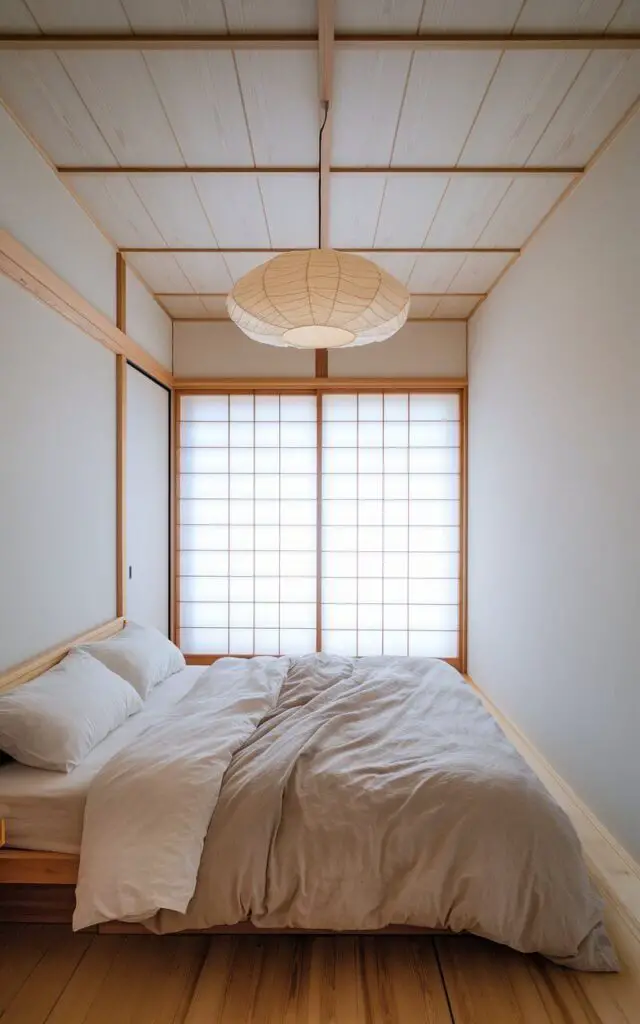
Japanese ceilings are typically understated, featuring natural wood beams or plain white panels.
Avoid decorative molding or heavy fixtures. Instead, opt for wooden slats, recessed lighting, or minimalistic pendant lamps.
A simple ceiling design helps maintain the calm, harmonious feel of a Japanese-inspired bedroom.
19. Incorporate Traditional Japanese Patterns
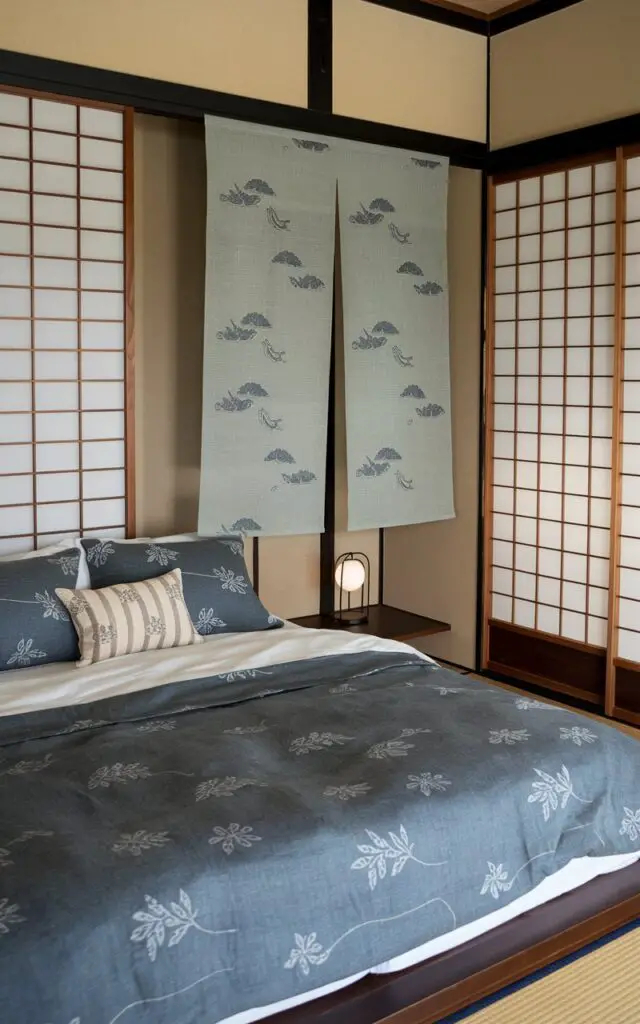
Subtle patterns inspired by nature, such as cherry blossoms, waves, or cranes, add depth to a minimalist bedroom.
These motifs can be introduced through textiles, wallpapers, or artwork.
Keep the color palette muted to maintain serenity while allowing these intricate designs to enhance the aesthetic.
20. Use Washed or Distressed Wood Finishes
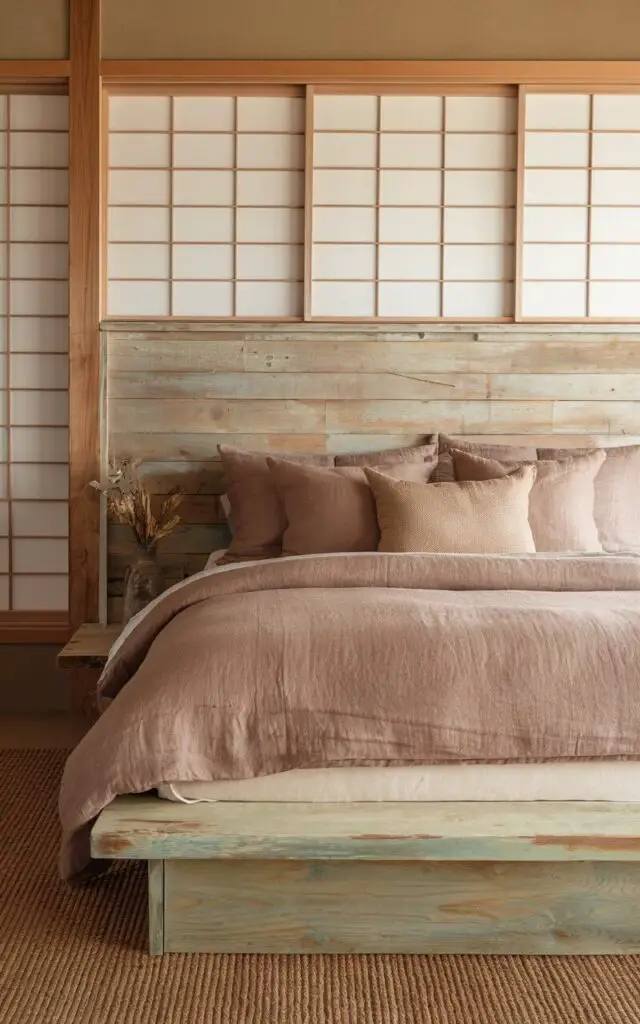
Instead of polished, high-gloss surfaces, opt for lightly weathered or washed wood finishes.
This natural, slightly aged look adds character while maintaining the organic, grounded feel of a Japanese bedroom.
Whether in furniture, flooring, or décor, raw wood textures evoke a sense of calm and timelessness.
21. Opt for a Monochrome Look
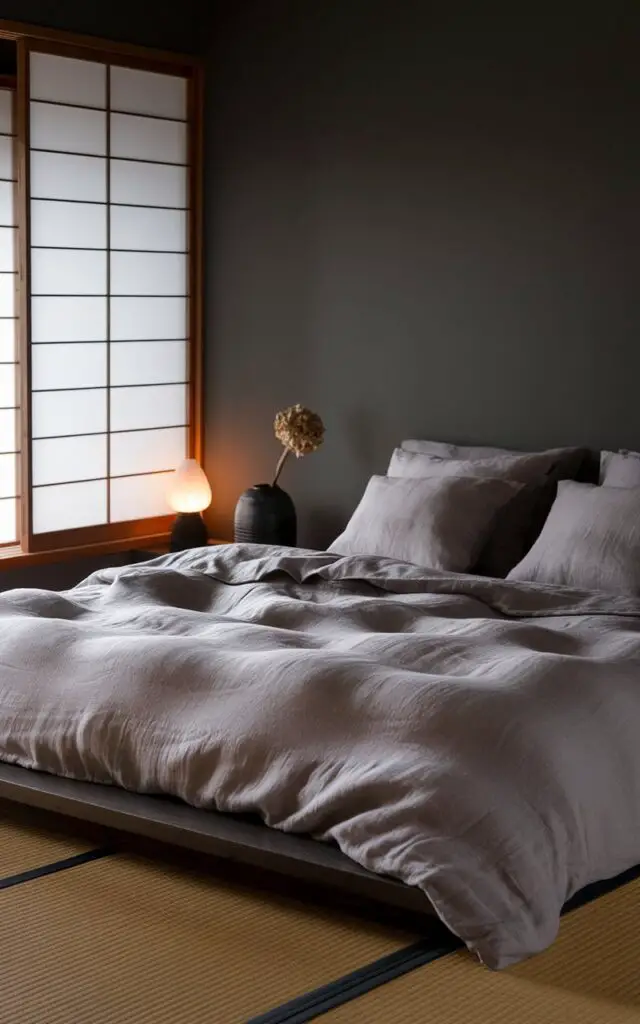
A monochrome color scheme—shades of beige, gray, or soft earth tones—creates a refined and cohesive bedroom.
This approach enhances the minimalist aesthetic while preventing visual clutter.
Layer different textures within the same color family to add depth without overwhelming the space with excessive decoration.
22. Include a Tea Nook
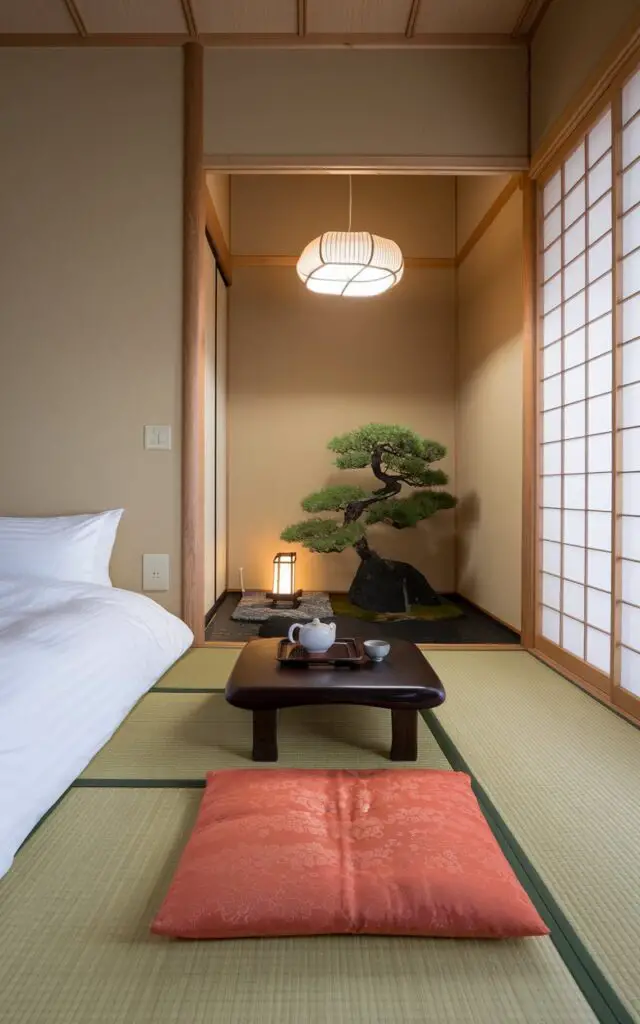
Dedicate a small corner for a Japanese tea setup.
A wooden tray, a ceramic teapot, and delicate cups transform tea drinking into a mindful ritual.
This space, inspired by traditional tea ceremonies, adds an element of tranquility and encourages a slow, intentional start or end to your day.
23. Use Soft, Indirect Lighting
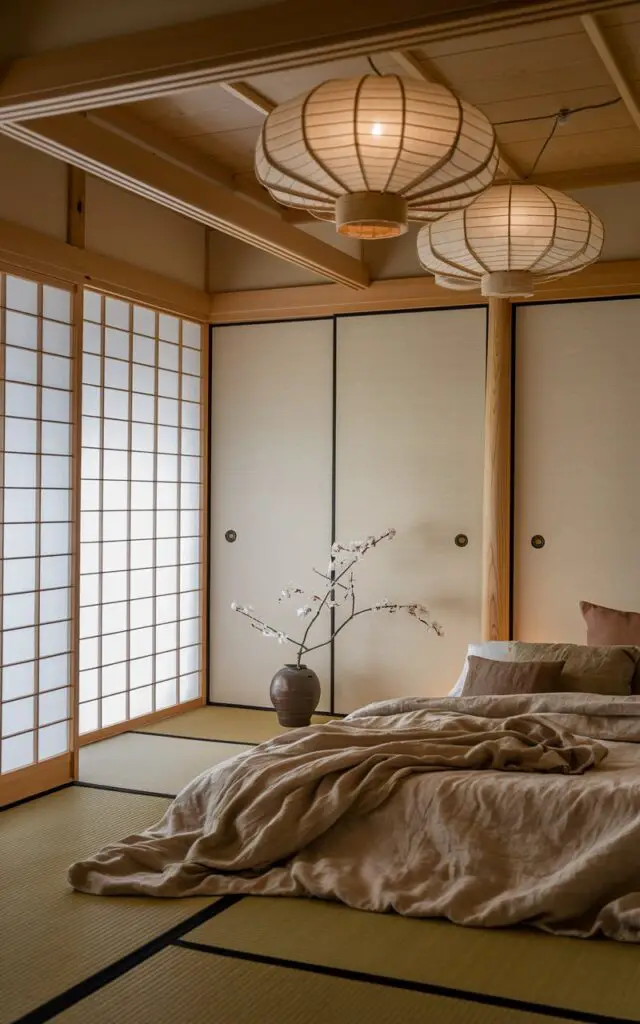
Harsh lighting disrupts the calming atmosphere of a Japanese bedroom.
Opt for diffused lighting through rice paper lanterns, dimmable LED fixtures, or wall sconces.
Soft, ambient illumination enhances relaxation, making the space feel cozy while maintaining the gentle, harmonious aesthetic found in traditional Japanese interiors.
24. Add a Noren Curtain
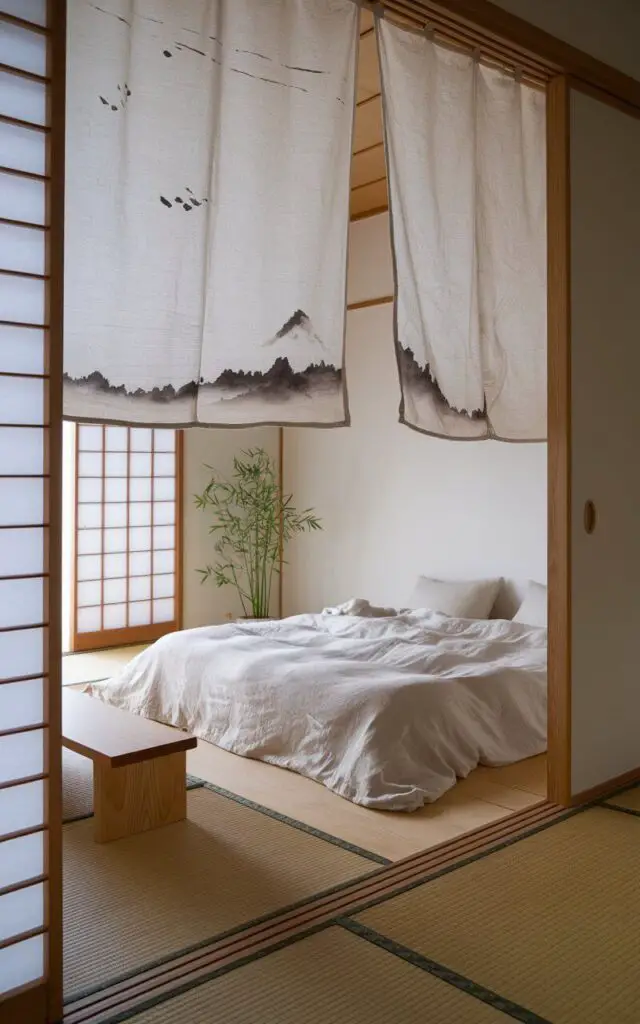
A noren is a short fabric divider traditionally used in doorways or between spaces.
Hanging one at the entrance of your bedroom or closet adds a subtle cultural touch.
Choose linen or cotton fabric with simple, nature-inspired designs to blend seamlessly with your minimalist decor.
25. Keep Décor Sparse and Meaningful
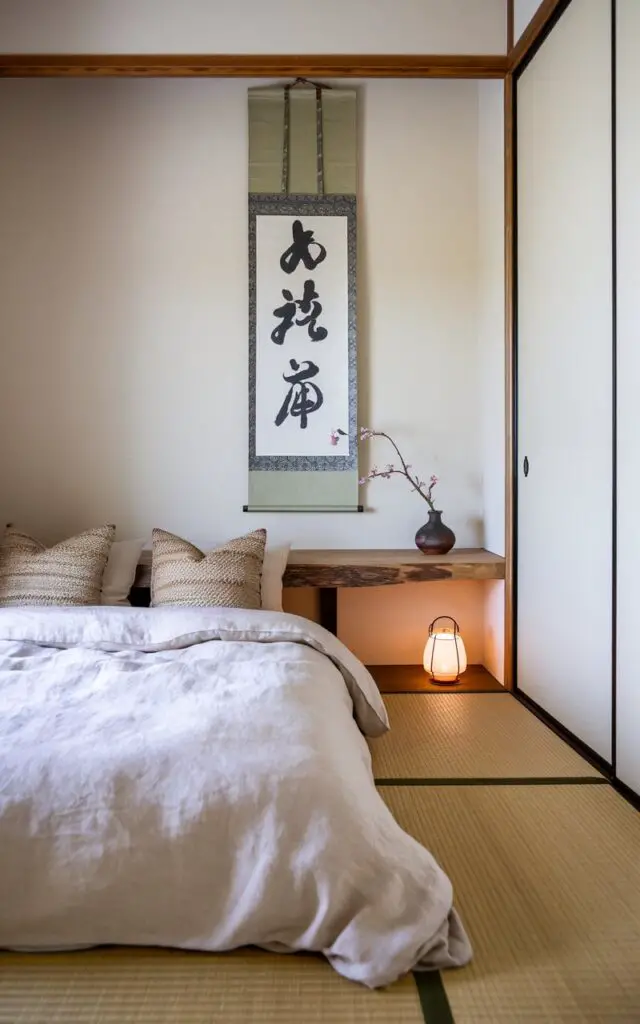
Japanese interiors focus on intentionality.
Instead of excessive decoration, choose a few meaningful pieces—a ceramic vase, a calligraphy scroll, or a single bonsai tree.
Each item should serve a purpose or evoke emotion.
This approach keeps the bedroom serene, uncluttered, and deeply personal.
Wrap Up
A Japanese bedroom is all about peace, simplicity, and nature.
By using soft colors, natural materials, and smart design, you can create a calm and beautiful space.
Whether adding a futon, shoji screens, or plants, small changes make a big difference.
Start your transformation today and enjoy pure serenity!
